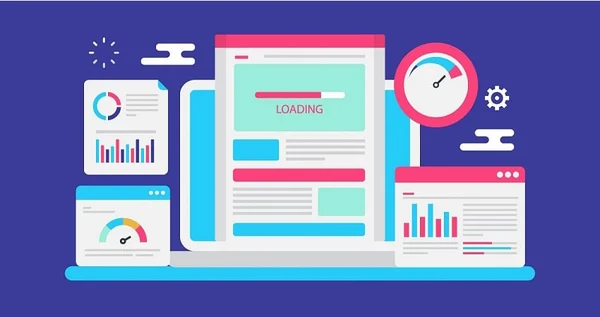Let’s take, for instance, you visit a nice restaurant for dinner, but the service is disheartening and
sluggish. Would you find your meal to be truly enjoyable?
Not that much, is that correct?
You might advise your friends to think of another option and refrain from dining at that restaurant
in the future.
The same holds for your ecommerce site
People dislike having to wait. They will probably go to your competitor’s website without giving it
a second thought if your site takes a long time to load.
And this is an even better option than a restaurant because all they have to do is click.
To be blunt, the growth of your eCommerce business depends on the speed of your website.
Therefore, enhancing the functionality of your website ought to be the priority of every
company.
You might wonder, but how? That being said, this is what this post will cover, and our
professionals offering custom eCommerce website development services are also here to help you so, Continue reading for more information.
Top 7 Ways to Improve Speed and Performance on Your E-commerce Sites
A website’s speed is directly related to a number of its various parts. Therefore, you must
maximize these components in order to boost its general efficiency. These are the seven
tried-and-true methods.
1. Include Top-Notch Plugins
Plugins enhance the performance of your website. However, every plugin increases the site’s
complexity as well. This may cause it to load more slowly. The above is not to say,
nevertheless, sluggish sites will result from using more plugins.
The rule is to prioritize excellence over volume when it involves plugins. Twenty easy plugins
can speed up your website more quickly than a single sophisticated one. Thus, give special
attention to selecting plugins with more features and a more straightforward programming
environment.
2. Apply flexibility to mobile devices
You simply cannot afford to disregard the mobile flexibility of your online store, since 79% of
buyers make transactions from their mobile devices. A responsive website offers several
advantages because it is both user- and search engine-friendly.
Because of this, you have to make certain your eCommerce platform has been
customized for mobile devices. Nowadays, a lot of eCommerce platforms include built-in mobile
optimization features that are simple to use.
3. Enhance Content
You simply must have excellent images for your eCommerce website. However, their size can
make them heavy, which will affect how quickly your site loads. Use photo compressor software,
such as Photoshop, to reduce the size of your visuals before posting them to your website to
prevent this. Reduce the amount of HTML, CSS, and JavaScript code as well to avoid long
pages loading slowly.
4. Employ Caching
Product publications, site-search indexes, client data, and more are stored for a while with the aid of caches. Therefore, the data can be supplied from cache content when a returning user
requests it. This gives the user a significantly and more swift loading time and assists in
preventing reiterated entry into the database.
5. Minimize Redirects
Your customers must patiently wait for the HTTP request-response process to finish whenever a
page reroutes to a different website. This negatively affects the responsiveness of the site and
adds needless delay to the page loading process.
Reduce the amount of redirects on the page to just the ones that are required in
order to avoid this. The fastest server-side redirects are 301 and 302, so try any of them.
6. Make Use of the Content Delivery Network
This is particularly beneficial for eCommerce businesses that serve customers from all over the
world. The content is kept on several servers spread across various geographical areas by the
help of a content delivery network (CDN). Thus, to conserve time, a neighboring server
handles the request made to load a page rather than the master server.
7. Examine Your Website
Websites that are unresponsive or perform poorly risk losing customers. You ought to
continuously track and measure all the different components of your website to make sure it is
operating at peak efficiency. You can perform a website audit with the aid of tools like Google
PageSpeed and Lighthouse, and you can receive thorough reports with recommendations for
enhancements.
Conclusively,
In order to boost online sales, small eCommerce companies must optimize the
content on their websites. It is a matter of necessity to add top-notch content, make their
website flexible with mobile phones, enhance their content, employ cache, reduce redirects,
make use of content delivery networks and lastly examine their website.
It’s time to put your newfound knowledge of how to enhance your website’s performance into
practice. But keep in mind that the work is not finished yet. Optimizing your entire store for
conversions come next in the routine after you’ve improved the efficiency of your website.
For any needs you may have regarding eCommerce websites, integration, or migration, our
eCommerce professionals offering custom eCommerce website development services are here to
help.

